A brief history of air-to-air missiles
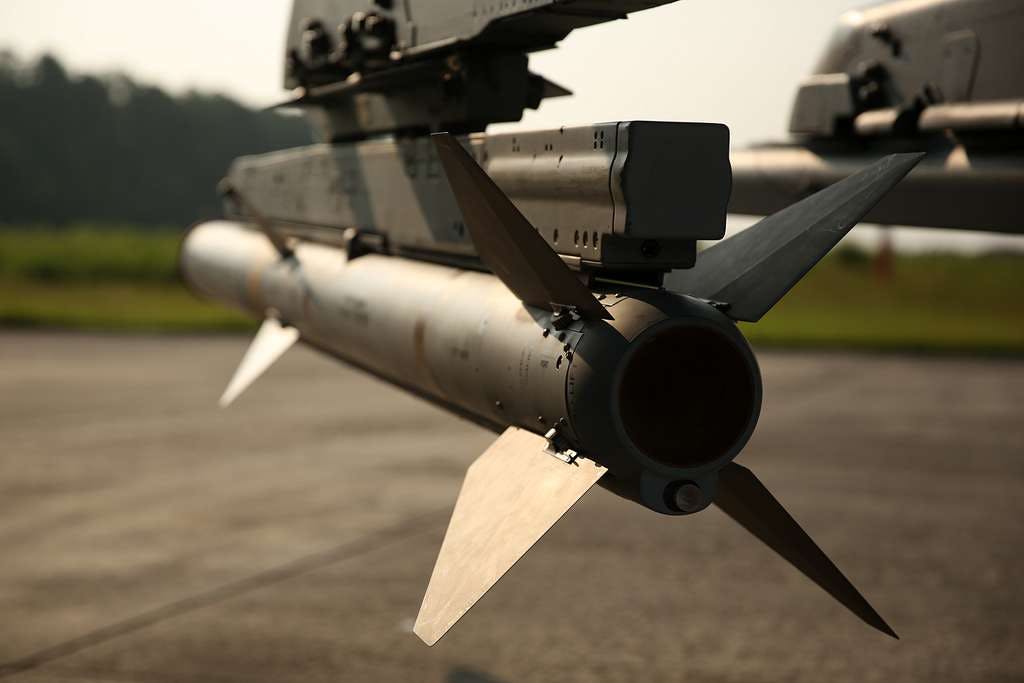
Blog
“Good tone. I've got good tone. I've got tone! I've got tone! Firing!”
While not one of the most quotable lines from Top Gun, it does introduce a fundamental weapon in modern air combat: the air-to-air missile. Over the decades there have been proponents and detractors of these expensive, complicated, and remarkable weapons. Some early versions were so bad that commanders in Vietnam removed them from their squadrons’ aircraft against orders. However, air-to-air missiles have also been responsible for some impressive kills against capable enemy aircraft, and are the primary defense against air attacks today. So, whether you are a die-hard fan of these technological marvels or you are in the camp that prefers “going to guns,” here’s a brief history of air-to-air missiles and the impact they have had on modern air warfare and defense.
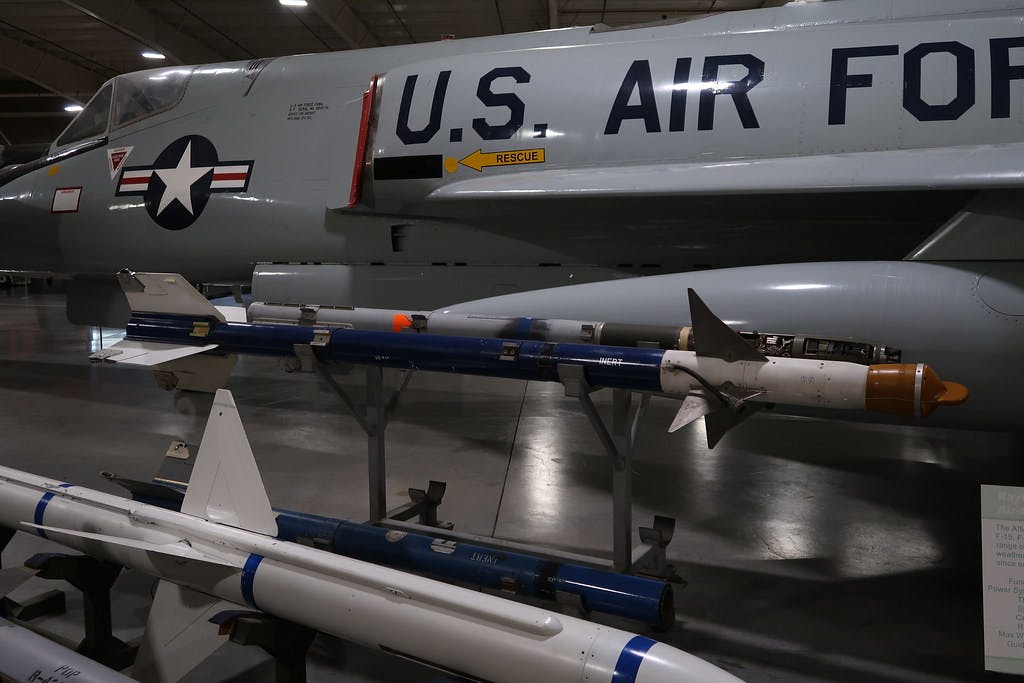
Heatseekers: The Sidewinder revolution
The Sidewinder “heatseeker” air-to-air missile had its early origins just after WWII at the Naval Ordnance Test Station (NOTS) at Inyokern, California (now called the Naval Air Weapons Station at China Lake). Dr. William B. McLean conceived the concept of an infrared-sensitive explosive fuze as part of an in-house research project. McLean was obsessed with “simple, reliable, and inexpensive” designs, and applied this vision to every project he was involved with. His fuze was intended to detonate rockets, anti-air flak projectiles, or similar ordnance when it got close enough to an intended target. Although this “proximity detonation” technology was in its early stages during WWII and would indeed become integral to nearly all modern air-to-air missile technology, at the time a self-guided, heat-homing air-to-air missile wasn’t even in the conceptual phase.
However, around the same time, the newly christened US Air Force was working on its first serious attempts at an air-to-air missile, the Falcon, which as you may imagine was extremely complicated and expensive, as many first attempts at revolutionary technology often are. The Falcon was designed to utilize semi-active radar homing (SARH) technology. This required the aircraft that fired the missile (or a ground-based radar station) to project a radar “beam” toward the enemy aircraft, that would then be reflected back to the Falcon, which would track and follow that signal to the target. More on the Falconlater, but spoiler alert: it sucked.
McLean’s fuze project, which laid the groundwork for all infrared (IR) homing projectiles that followed, rapidly progressed from a proximity fuze detonated by a strong IR signal to an articulated nose cone with 4 fins used to steer a rocket (thus becoming a self-guided missile), while the rear fins and rocket motor were fixed in place. McLean’s elegantly simple concept was that as the infrared sensors in the nose assembly detected and articulated toward the heat source of an enemy aircraft’s exhaust, the missile would automatically be guided by the fins whose motion was directed by the heat-sensitive nose cone. The missile steered itself until it either impacted the target or drew close enough that its proximity fuze fired and detonated the warhead and released a cloud of aircraft-aluminum-shredding shrapnel.
Read our full article on the history of the Sidewinder missile for more details, but the TL;DR version is that the Navy had McLean’s “heat-homing” rocket project canceled, as they were convinced that radar-guided air-to-air missiles were the only sensible way to go. However, McLean and his team volunteered their time and used independent funding whenever they could find any, and continued refining the Sidewinder over the next couple of years.
One of the “simple, reliable, and inexpensive” concepts utilized in the design of the Sidewinder was that it required no on-board batteries to provide electrical power to move the control surfaces or fire the warhead. The missile had its own hot-gas generator that would burn for around 20 seconds, generating sufficient power to run all of its systems and actuate the steering fins in the nose until impact.
By 1951, McLean was ready to present his “heat-homing missile” to Navy leadership. Somewhat ironically, in 1952 McLean’s missile was officially designated the AIM-9 (Air Intercept Missile), and it won McLean a $25,000 prize for its conception and development and an award plaque from President Eisenhower.
McLean was further vindicated when the Air Force was convinced by some proponents of McClean’s missile to stage a head-to-head shootout between the AIM-9 Sidewinder and the Air Force’s pet project, the AIM-4 Falcon. The competition wasn’t even close. Think Mike Tyson versus Steve Urkel. During the evaluation, the Falcon suffered multiple failures to fire due to technical problems, while the Sidewinder made several successful one-shot kills on aerial target drones. The AIM-9 had proven itself and the Air Force stubbornly began fielding it in a limited capacity on some aircraft, but still officially favored the Falcon for its theoretically superior performance. This stance continued into the Vietnam conflict and would prove extremely problematic, as we’ll see later.
The AIM-9B, the first Sidewinder used in any capacity in combat, used a reticle seeker, with an angled mirror rotating in conjunction with the infra-red reticle to provide a cone-shaped IR scan. The control electronics guided the missile to stay in the center of the scanning area, which resulted in better accuracy, and provided a wider field of view than would have been possible without the scanning mirror. The aircraft interface for the AIM-9B was as simple as the rest of the weapon, with an audio tone fed into the pilot’s headphones when the heat sensors were powered up—with the missiles still mounted to the aircraft’s wings—and this tone changed from a low growl to a shrill whine as a target lock was acquired. This is the “good tone” referenced by Pete Mitchell, er, Maverick, in the introduction above. Then it was just a question of pulling the trigger, and the Sidewinder did the rest.
Initial Sidewinder versions, though impressive for the time, could only pick up particularly hot targets, meaning they had to be focused on an aircraft’s exhaust and thus could only be fired from behind an enemy. The AIM-9B was also not very maneuverable and fairly easy to shake, particularly if an enemy was at a significantly higher or lower altitude compared to the launching aircraft.
This deficiency was remedied over the years as improvements in the AIM-9 developed, though the AIM-9B, D, E, G, H, and J variants were still not “all-aspect” capable, meaning they still needed to be fired with a reasonable presentation toward the hot enemy aircraft exhaust. (The AIM-9C variant was an experimental version that used semi-active radar homing rather than IR sensors, and served as the basis of the later AGM-122 Sidearm anti-radar missile.)
The AIM-9 was so groundbreaking that it defined air-to-air missile warfare not only for America and its allies but for our enemies, who reverse-engineered their own Sidewinder missiles when a Taiwanese (Republic of China) Sabre jet fired against a squadron of Chinese Migs during a dogfight in September 1958, and one Sidewinder hit an enemy jet but failed to explode. The pilot returned safely to base with the missile embedded in his fuselage, and eventually turned it over to the Russians, who after some careful study, released their own version of the AIM-9 in 1961 as the Vympel K-13. The K-13 was the communists’ bread and butter air-to-air missile for decades, and remains in service today.
Starting in 1977 the AIM-9L introduced all-aspect attack capability, meaning it could be fired from any angle facing an enemy, including head-on. The AIM-9M was improved further, with better background discrimination, enhanced IR performance against countermeasures, and a low-smoke rocket motor for reduced signature. AIM-9Ms were responsible for downing all 10 Sidewinder-hit aircraft during the Gulf War.
The AIM-9X first entered service in November 2003 and is a significant upgrade to the Sidewinder family. The 9X has an improved IR seeker with 90° off-boresight capability, but can also be fired before lock if selected, and sent updated target info via datalink. Rather than using fins, the 9X variant is steered with a two-axis thrust-vectoring control (TVC) system providing increased turn capability over earlier models with traditional control surfaces. Analysis shows the AIM-9X can pull up to an incredible 60Gs without self-destruction. Using modern helmet-mounted displays and targeting, a pilot or weapons officer can direct the AIM-9X missile’s seeker and “lock on” by simply looking at a target.
The AIM-9 is one of the oldest, least expensive (at around $400,000 per copy for the latest Block II variants—if you’re thinking that doesn’t sound so cheap, check out how much an AMRAAM costs below), and most successful missiles in the US weapons inventory. However, Sidewinders have generally been considered a short-range weapon, with only the latest AIM-9X Block II considered BVR (beyond visual range) capable, and only just. Which brings us to the radar-guided air-to-air missile family.
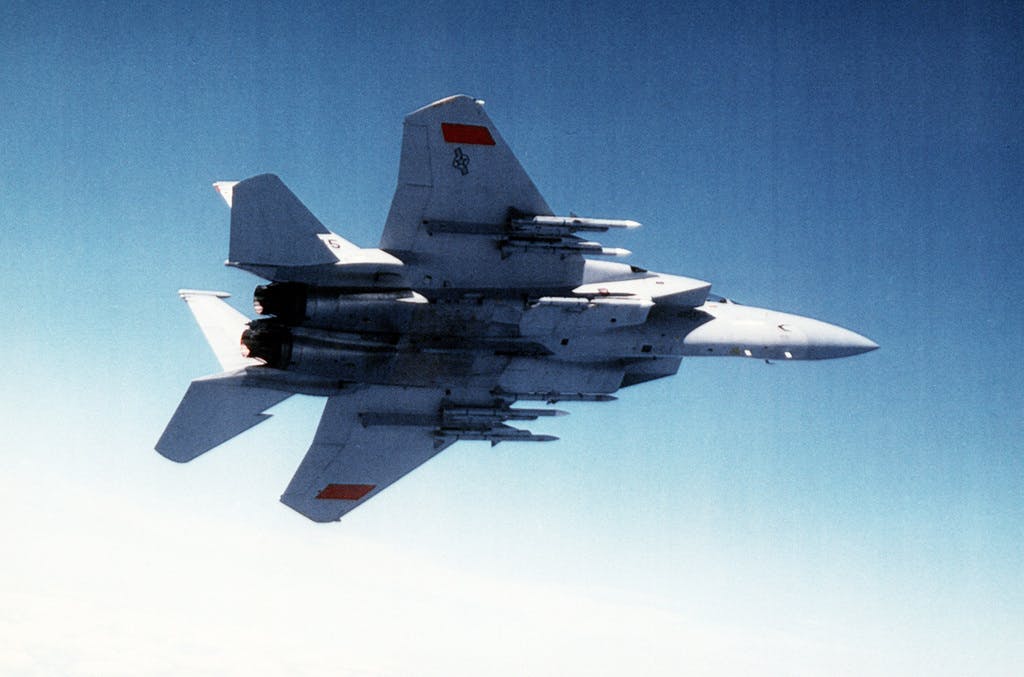
Radar-guided air-to-air missiles
As noted above, the first air-to-air missile concepts were based on radar-homing technology. Radar was used to great effect during WWII, but radar arrays were still huge and resolution was poor. However, with a directed radar “beam” projected from a separate air- or ground-based source, and narrowed in on a single aircraft, a semi-active radar-homing (SARH) missile could follow that radar signal, adjusting its trajectory as needed, until the missile’s warhead was either detonated by a proximity fuze (on later models) or by impact.
The earliest SARH missiles such as the Firebird were very large and their subsonic speed made them obsolete before they were even finished with development. However the AIM-4 Falcon showed enough promise that the Air Force considered the Falcon its primary air-to-air platform for over a decade (despite the Sidewinder’s superior performance). The AIM-4 (or what would become known as the AIM-4) was first test fired in 1949, and the production Falcon known as the F-98 debuted in 1954, with the primary intent to be used against the anticipated large squadrons of cold-war enemy bombers.
The AIM-4 Falcon family was widely manufactured (over 50,000 were built) and deployed through Vietnam, but unfortunately its performance in actual combat was pretty pathetic. Since it was designed primarily to target large enemy bombers and early models had only impact fuses, it couldn’t keep up with smaller, faster-moving Migs. The Air Force tried fitting the Falcon with a heat-seeking head (the AIM-4G variant) but with little success.
One source points out, “The main problem of the missile was seeker cooling. The limited amount of on-board coolant meant that the seeker could not be pre-cooled for any length of time, which in turn meant that it had to be cooled more or less shortly before firing, i.e., when close-range combat had already started. This cooling, however, took up to 5 seconds which is [an] eternity in a dogfight, so that most targets were out of reach again when the missile was finally ready. Moreover, when the coolant was exhausted after several aborted launches, the Falcon was just useless dead weight, which had to be brought back to base for servicing.”
It got so bad that USAF Colonel Robin Olds, who commanded the F-4D-equipped 8th Tactical Fighter Wing, said of the Falcon that he “loathed the damned useless things. . . In two missions I had fired seven or eight of the bloody things and not one [worked properly]. They were worse than I had anticipated. Sometimes they refused to launch; sometimes they just cruised off into the blue without guiding.” Colonel Olds grew so frustrated with the Falcon’s poor combat performance that he issued an unauthorized order for his entire fighter wing to rewire their F-4D Phantoms to be able to carry and launch the more reliable AIM-9 Sidewinders. This field-expedient modification was not approved, but the results were so much better that eventually the entire USAF made the same decision.The Falcon scored only 5 kills over Vietnam. The AIM-4 was gradually withdrawn from the US arsenal beginning in 1969, and by 1973, was no longer operational with the USAF.
However, the replacement SARH radar-guided air-to-air missile, the AIM-7 Sparrow, wasn’t much better, at least in its initial guise. Like the Falcon, the early Sparrow (entering service in 1958 as the AAM-N-6) was intended primarily for use against larger targets like bombers, and demonstrated a number of operational limitations when pressed into combat with fast, nimble fighters. Smaller targets required a strong reflected radar signal, and this made it difficult to achieve lock-on at the missile’s effective range. In combat, this meant that the launching aircraft needed to fly directly towards the enemy, pointing its targeting radar at the target throughout the engagement. In the meantime, an enemy equipped with IR-homing missiles would often be in range, dodging around, and firing heatseekers.
Much like early Sidewinders, the first Sparrows were also effective only against enemies at roughly the same or higher altitudes, since down-looking attacks were typically confused by radar reflections from the ground. By the mid-1960s the AIM-7 family was on its fifth major variant. Over 25,000 AIM-7Es were produced and saw extensive use during the Vietnam War, and were initially standard equipment on the F-4 Phantom. Still, the Sparrow’s combat performance was disappointing overall. The rules of engagement generally prohibited BVR (beyond visual range) engagements, which theoretically was the Sparrow’s bailiwick. Overall, the probability of a kill of the AIM-7E was less than 10%, with US fighter pilots shooting down 59 aircraft out of 612 Sparrows fired. Only two kills were obtained beyond visual range.
In 1969 an improved version, the AIM-7E-2, was introduced, with abbreviated fins and various changes to the fuzing and electronics. The E-2 was considered the “dogfight” Sparrow, intended to be used at closer ranges where it was traveling at high speeds, and could be fired when head-on to the enemy, making it much more useful in the visual limitations imposed on the engagements. However, even with the improvements, its probability of kill rate was only 13% in combat. This led pilots to adopt the practice of firing all four AIM-7s onboard at once, hoping one would lead to a kill. Combat reports showed the Sparrow’s largest flaw was that it sometimes detonated prematurely, roughly 1,000 feet ahead of the launching aircraft, but it also exhibited multiple motor failures, erratic flights, and various fuzing problems.
However, as technology and electronics improved, so did the AIM-7. The AIM-7F, which entered service in 1976, had a dual-stage rocket motor for longer range, solid-state electronics for greatly improved reliability, and a larger, more effective warhead. The version of the Sparrow in active service today, the AIM-7M, entered service in 1982 and features digital controls, improved ECM resistance, an active radar proximity fuse, improved reliability in electronic countermeasures environments, and has a significantly more lethal warhead. During the 1991 Gulf war, the AIM-7M scored multiple air-to-air kills. Of 44 Sparrow missiles fired, 30 (68.2%) hit their intended targets. What’s more, 19 kills were achieved beyond visual range. That’s more like it.
The AIM-7 Sparrow is still in active service both in an air-to-air role as well as in the base/ship defense ground-to-air variant known as the RIM-7 Sea Sparrow.
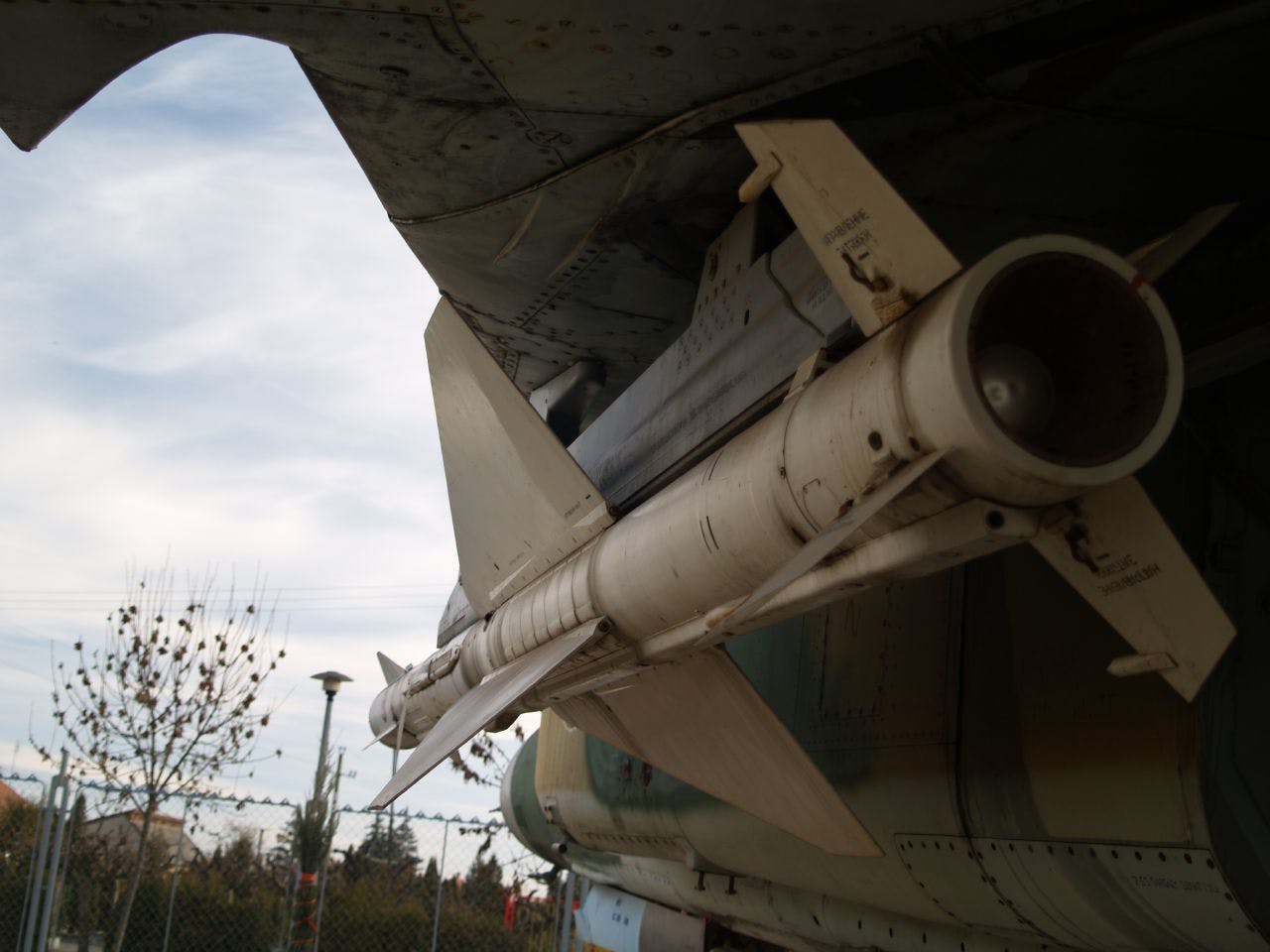
The AMRAAM AIM-120 active-radar-homing missile
The Advanced Medium Range Air-to-Air Missile (AMRAAM) AIM-120 (production beginning in 1897) is a new generation of weapon for today’s advanced threats. Compared to the AIM-7 Sparrow, the AIM-120 is faster, smaller, and lighter, and has improved performance against low-altitude targets and “look down, shoot down” capability. Crucially, the AIM-120 incorporates active radar with an inertial reference unit and onboard micro-computer system, which makes the missile less dependent upon the fire-control system of the aircraft, or external radar signals.
Active onboard radar means that unlike SARH missiles, the missile itself is capable of projecting a radar signal and processing the information it receives. The AMRAAM can be used like an SARH missile, but once the missile closes on a target, its active radar guides it to intercept. This enables modern pilots to aim and fire several missiles simultaneously at multiple targets, then perform any necessary evasive maneuvers while the missiles guide themselves to their targets independently of the launching aircraft. This is true “fire and forget” technology, and is pretty scary. The AMRAAM has scored at least 16 air-to-air kills in conflicts over Iraq, Kosovo, Syria, Bosnia, and India.
Another nifty trick up the AIM-120’s sleeve is its ability to home in on radar-jamming signals. This capability potentially defeats Electronic Warfare (EW) capable targets with advanced radar-jamming technology. Rather than flying along a remotely transmitted radar “beam” or actively seeking radar signals to target, in this mode the AIM-120 detects EW countermeasure signals being transmitted by an enemy aircraft and is able to home in on that signal. In this way the very countermeasures intended to defeat inbound air-to-air missiles can ironically become an enemy’s downfall.
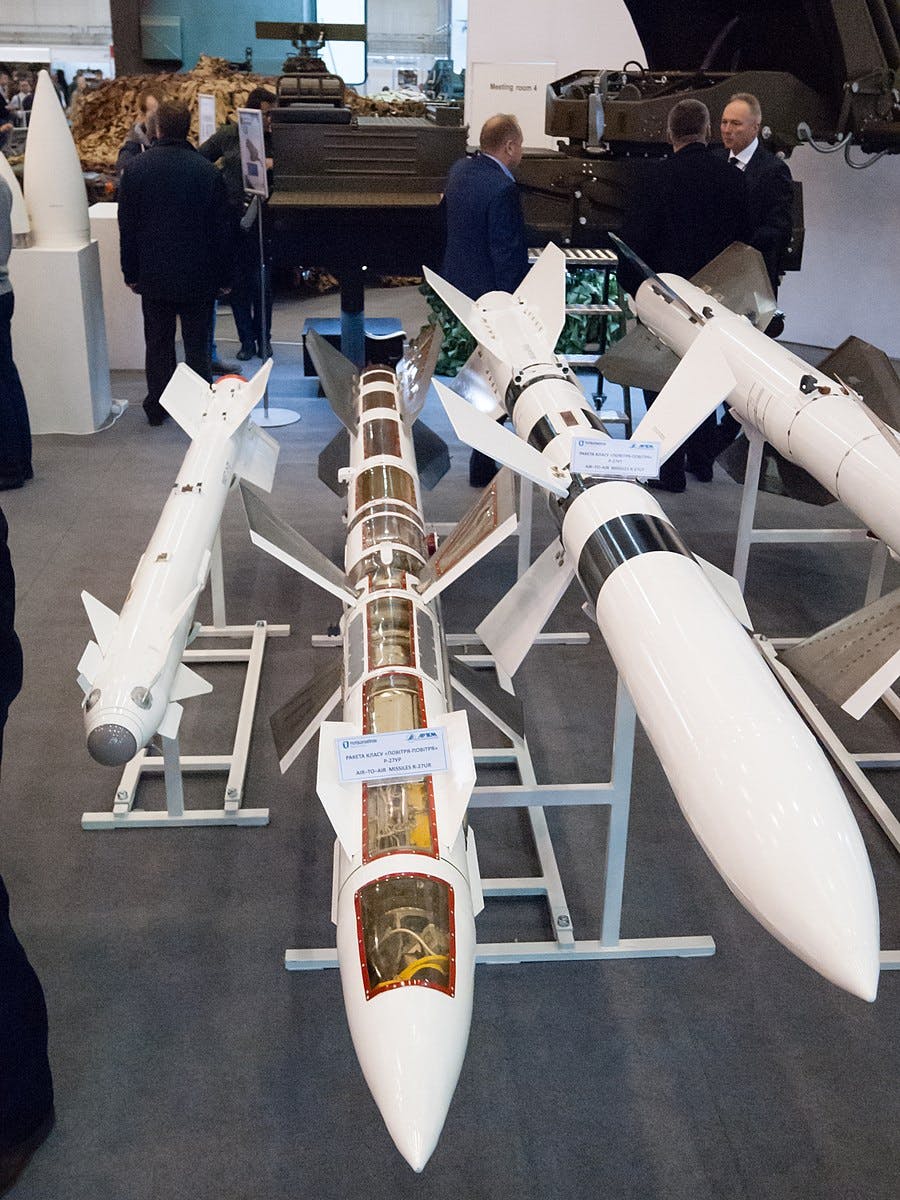
Generations of the AIM-120 Advanced Medium Range Air-to-Air Missile
- AIM-120A: Entered service in 1991. Range of 30 miles. Active radar seeker.
- AIM-120B: Upgraded and reprogrammable variant. 40 mile range.
- AIM-120C: Smaller control surfaces to allow internal bay launch from F-22 and F35. Improved high-angle off-boresight launch capability. 50 mile range.
- AIM-120D: Operational capability in 2015: Greater range, GPS-assisted guidance, updated data links, jammer-resistance, and improved warhead for greater lethality. 100+ mile range, with a top speed of up to Mach 4.
The AIM-120 is the most sophisticated air-to-air weapon in use by the US today. It was designed with “beyond visual range” capability from the beginning, and the range has continually improved. In March of 2021, the latest version of the AMRAAM scored the longest-range air-to-air kill in history against a target drone, according to the Air Force (however, they won’t disclose exactly how far that is for security reasons).
The AIM-120 AMRAAM has benefited from more than 5,000 test fires, and has been used in combat around the globe. It is currently in use by 41 nation allies of the United States.
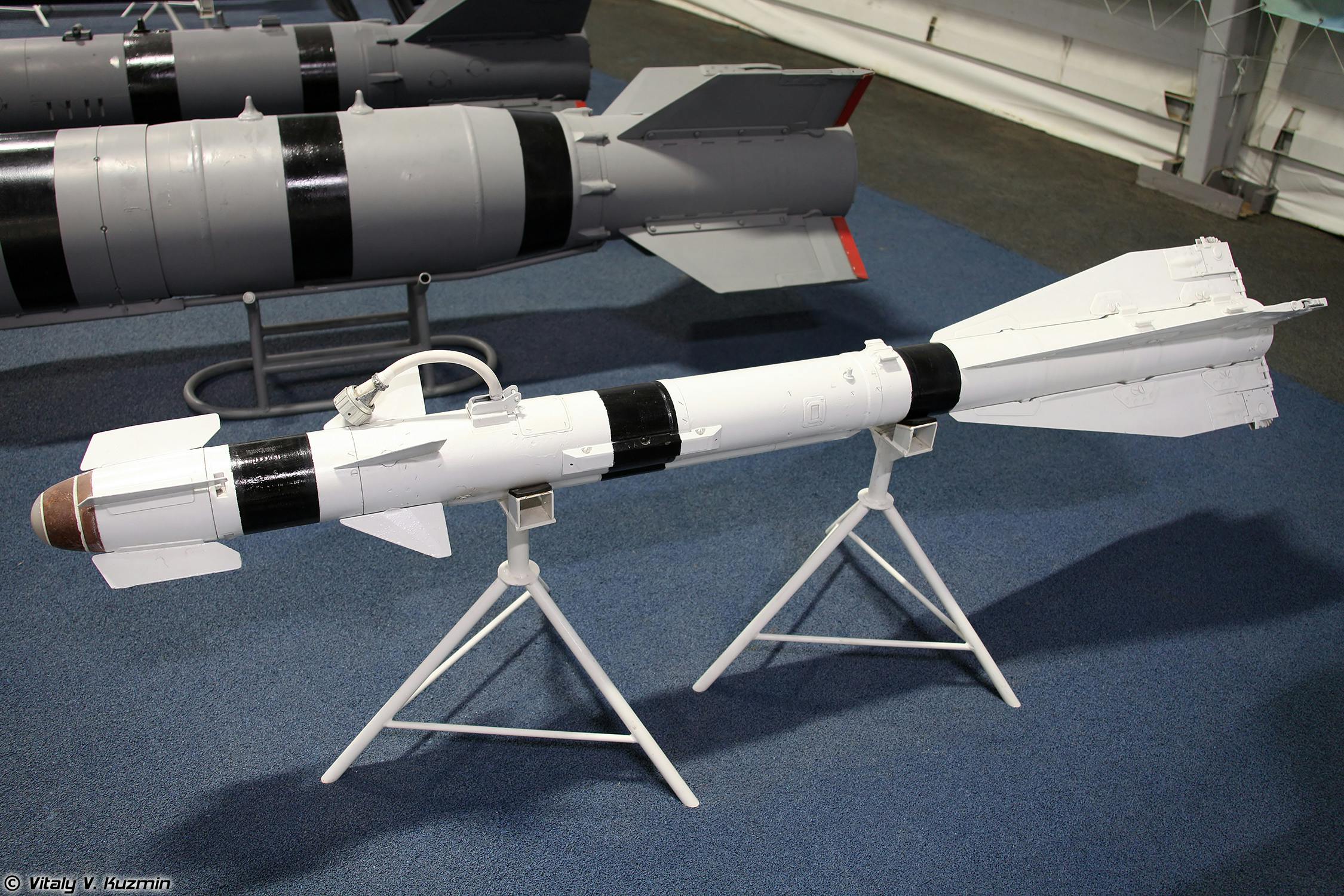
How much does an AMRAAM AIM-120 cost?
All this nifty tech and capability doesn’t come cheap. Fiscal Year 2024 deals have been reported that set the price of a single AIM-120 at between $1.37 million and $2.42 million, depending on whether you’re a domestic or “export” customer. Either way, that’s not chump change. Additionally, even with all of its fancy targeting and EW-fighting capabilities, combat stats place the hit probability of the AIM-120 at 0.59, or roughly a 60% chance of a one-shot kill. Not bad, but it’s not exactly a sure thing, either.
As good as the AIM-120 is, the USAF is currently in active development of at least six new advanced air-to-air missile systems. The last production buy for AIM-120s is expected for FY2026, with service expected to extend into the 2050s. However, the AIM-260 Joint Advanced Tactical Missile (JATM) program is proceeding quickly, and is intended to counter the Chinese PL-15 air-to-air missile, which has a 100+ mile range and flies at speeds up to Mach 5.
Here’s hoping America and her allies can keep up with the Joneses.
–By Jeff Davis, Intergalactic Scribe
Sources:
https://www.af.mil/About-Us/Fact-Sheets/Display/Article/104576/aim-120-amraam/
https://migflug.com/jetflights/how-fighter-jets-target-and-lock-on-enemy-jets/
https://www.airvectors.net/avusaam_1.html
https://youtu.be/oJpT3Jr4EBc?si=-HAJFAde3NYjUpg2